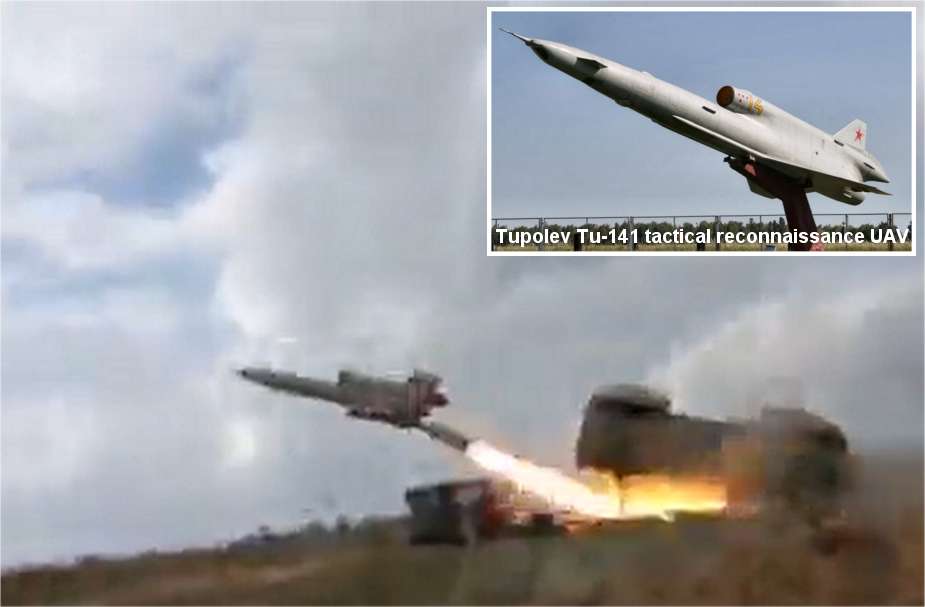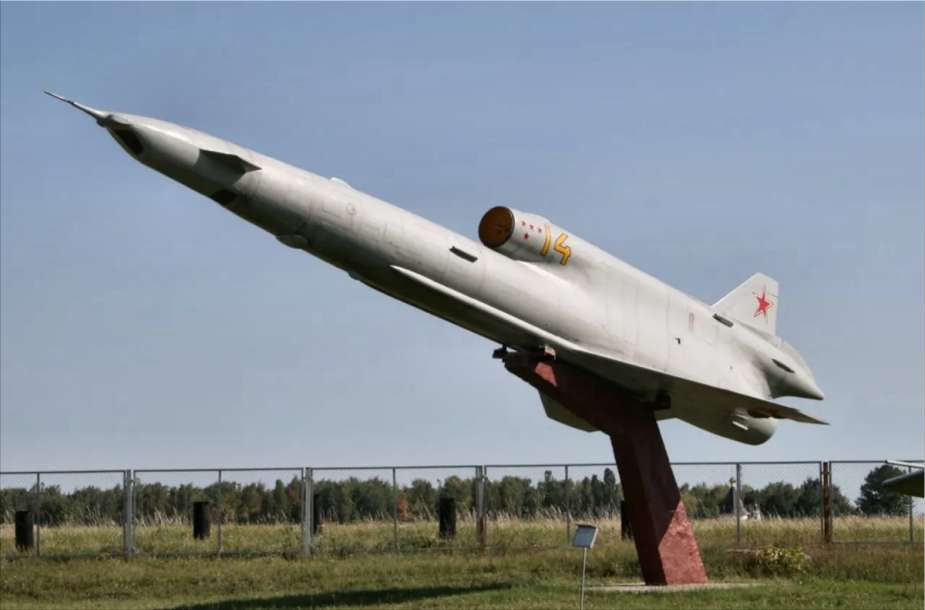- Army
- Conflicts in the world
- Israel - Iran conflict 2025
- Pakistan - India Conflict 2025
- Russia Ukraine War 2022
- Libya conflict day by day
- HAMAS - Israel War 2023
- Operation Serval in Mali French Army
- Sangaris operation Central African Republic
- Sangaris opération militaire République Centreafrique
- Ukraine - Russia conflict
- Syria conflict news
- Defence & Security Industry Technology
- Armies in the world
- Analysis Defense and Security Industry
- Conflicts in the world
- Navy
- Air
Ukrainian weaponized Tu-141 tactical drone resumes attacks on Russian Forces
According to a tweet by the user oscar198o, Ukrainian engineers have converted another Tupolev Tu-141 Strizh tactical reconnaissance drone into a cruise missile, which was recently used against an assumed Russian ground target.
Follow Army Recognition on Google News at this link

Ukrainian soldiers launched a weaponized Tu-141 reconnaissance drone against an assumed Russian ground target (Picture source oscar198o and Yandex)
This is not the first instance of Ukrainian engineers transforming a Tu-141 into a missile. As reported by the Army Recognition Editorial Team on December 8, 2023, unidentified aerial systems targeted two Russian military air force bases. Russian military officials confirmed that these weapons launched by Ukraine were Soviet-era jet drones, specifically Tupolev Tu-141s. These drones, relics from the Soviet era, were last in active service during the 1980s for photo-reconnaissance missions in the Soviet air force.
The Tu-141 Strizh, developed by OKB Tupolev in the Soviet Union, emerged as an operational-tactical reconnaissance unmanned aerial vehicle (UAV), making its debut flight in 1974. It was designed for reconnaissance missions to a depth of several hundred kilometers from the front line, equipped with photo and infrared reconnaissance capabilities. The landing was accomplished through a parachute system in the tail section.
The first prototype took flight in December 1974. Serial production of the Tu-141 began in 1979 at the Kharkiv Aviation Plant, producing a total of 152 UAVs until 1989.
The design philosophy of the Tu-141 Strizh centered on a fusion of engineering and operational considerations, resulting in distinctive technical specifications. With dimensions of 14.3 meters in length, a height of 2.4 meters, and a weight of 5,370 kg, the aircraft's wingspan spanned 3.875 meters, featuring a triangular design with a leading-edge sweep angle of 58 degrees and slight variations at the root sections. Its vertical tail boasted a sweep angle of 52 degrees along the leading edge.
The Tu-141 Strizh's fuselage combined form and functionality, maintaining a cylindrical shape with a diameter of 950 mm that smoothly transitioned into an oval configuration near the engine installation area. Powered by a single KR-17A turbojet engine, generating a static thrust of 2,000 kg, the aircraft reached a maximum speed of 1,110 km/h.
Integral to its reconnaissance role, the Tu-141 Strizh possessed a flight range of 1,000 kilometers, enabling exploration of regions at extended distances. Operating at a practical ceiling of 6,000 meters, the aircraft demonstrated versatility in adapting to diverse reconnaissance scenarios. Notably, it could operate at a minimum flight altitude of 50 meters, showcasing agility in navigating different terrains.
The launch mechanism of the Tu-141 Strizh was facilitated by a robust solid-propellant booster system situated beneath the rear fuselage. Towards the end of its reconnaissance task, a well-engineered parachute system came into play, with braking and landing parachutes strategically positioned in the rear fuselage above the turbojet nozzle to ensure controlled and secure returns.
For the deployment and operation of the Tu-141 Strizh, an array of ground-based handling and launch equipment was employed, including SPU-141, TZM141, MT-141, KPK-141, and POD-3. These mobile devices ensured seamless functionality, enhancing the UAV's efficiency in reconnaissance and quick repositioning.

The Tupolev Tu-141 Strizh is a Russian tactical reconnaissance drone launched in 1974. (Picture source Yandex)
Converting the Tu-141 Strizh UAV into a missile involves a series of modifications due to the significant differences between the original UAV's design and the requirements of a missile.
Primary modifications pertain to the propulsion system. The original turbojet engine, designed for reconnaissance, is unsuitable for the high-speed and rapid acceleration demands of a missile's mission. Integration of a rocket or missile propulsion system, such as solid-fuel or liquid-fuel engines, becomes necessary to meet the missile's performance requirements.
Another substantial alteration involves the integration of a warhead. As the original UAV was intended for reconnaissance, adjustments are necessary to repurpose internal space for the warhead and its components. This change is crucial to the missile's intended role.
Structural reinforcement is also essential to endure the forces experienced during launch and ascent. The airframe must be strengthened to manage these stresses and maintain stability under swift acceleration conditions.
Adjustments to guidance and control systems are needed as well. Unlike the original UAV, which may have employed simpler guidance mechanisms, cruise missiles require precise targeting capabilities. Integration of advanced guidance systems such as GPS navigation and inertial guidance is crucial for accurate target delivery.
Flight control systems must be re-engineered to accommodate the missile's unique flight trajectory, including provisions for trajectory alterations and potential staging.
Communication system adaptation is necessary, as cruise missiles typically operate autonomously with minimal communication with operators. Modifications are essential to facilitate autonomous, one-way flight trajectories.
The compatibility of the launch platform is also a consideration, involving adjustments to ensure successful launch and deployment from various platforms.
Exploration of stealth features may be considered to reduce radar detection. While implementing advanced stealth capabilities may pose challenges, efforts to decrease the missile's radar cross-section could be taken into account.


























